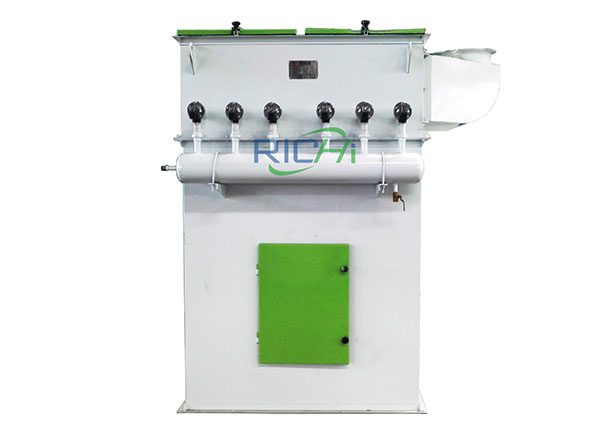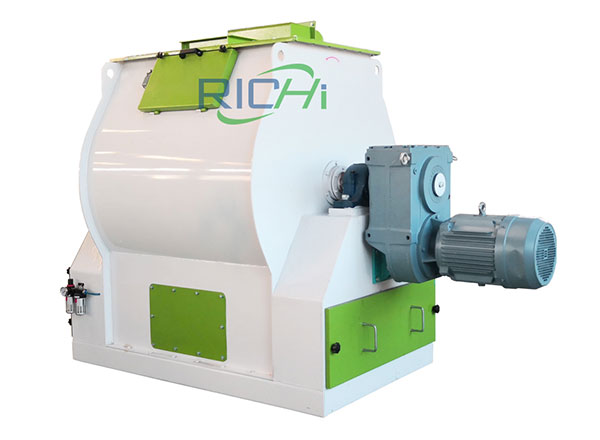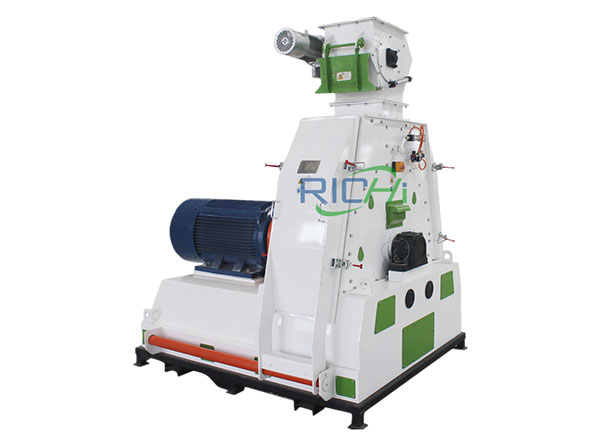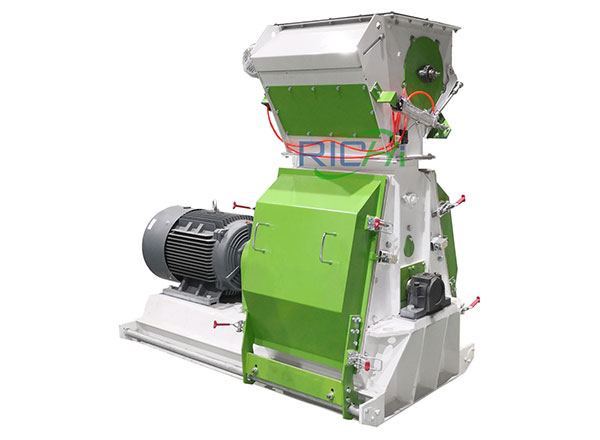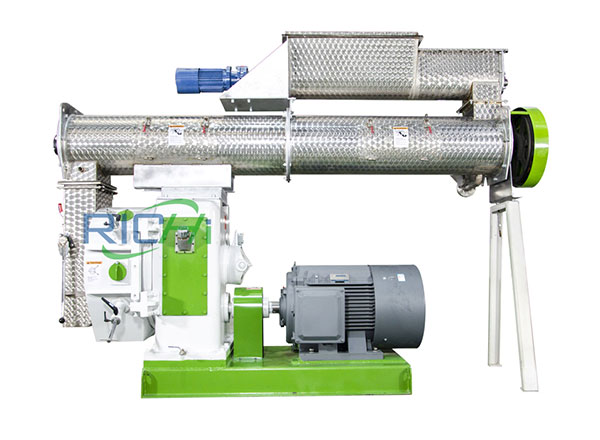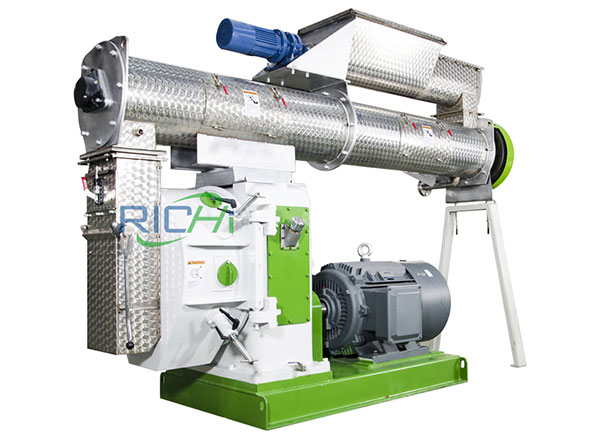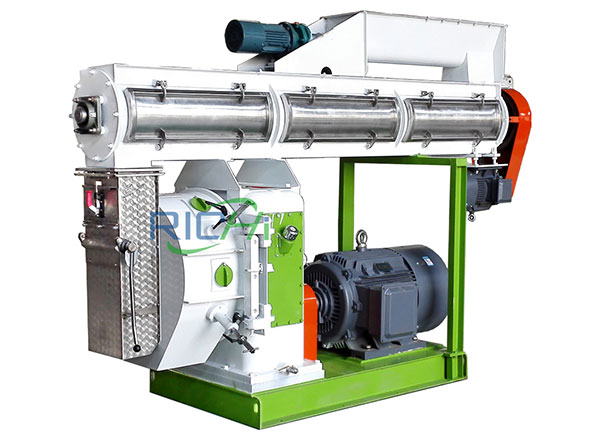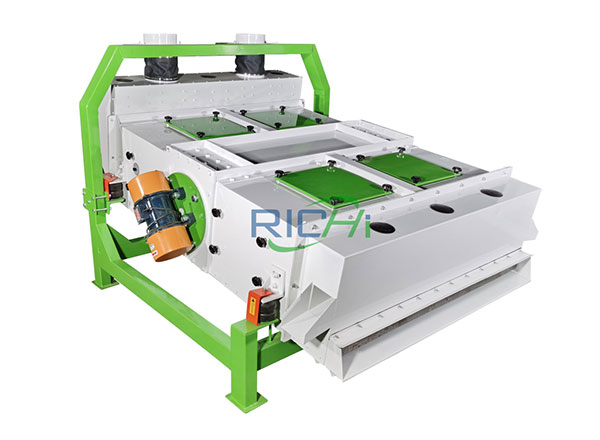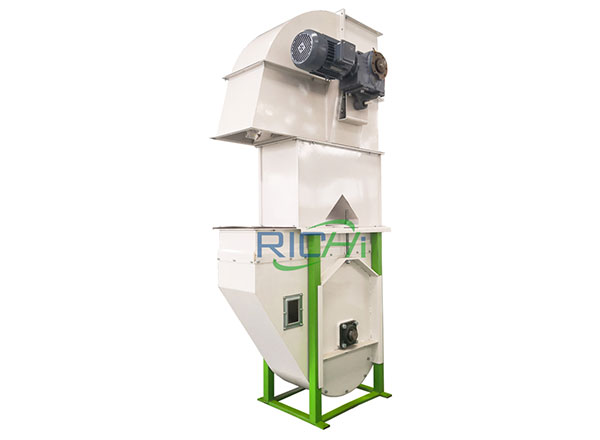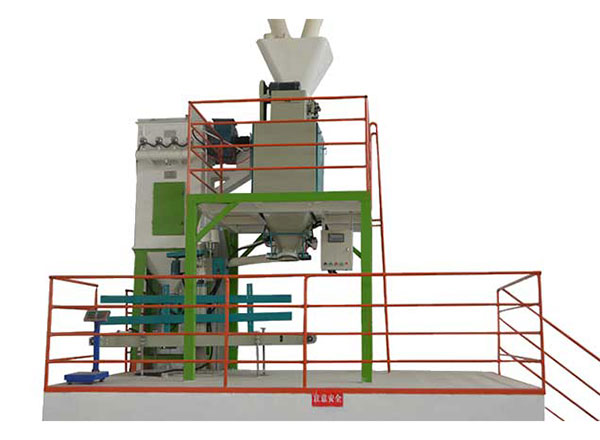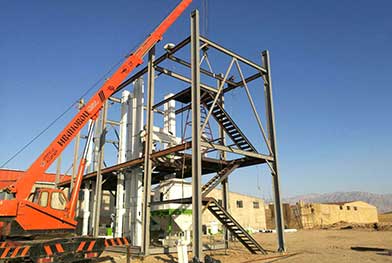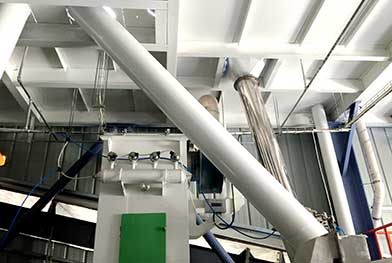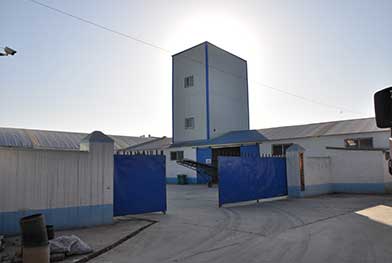If you ever had chickens, you know that there are three types of chicken feed that you can buy: mash, pellet, and crumble. You might be wondering, though, out of three chicken feeds, which one is the best for chickens? Complete feed pellet production line used corn, wheat, soybean, grain, soybean meal, cotton seed meal, stone powder, premix and some other biomass material as raw material to produce feed pellet. Richi machinery fully automatic chicken feed pellet plant production lin The process includes grain hammer mills, conveyors, mixers, chicken feed pellet pelletizing maker, coolers, crumbling machine, screening machine, automatic packing machine, etc. The feed pellets can be produced according to your needs. 1-12mm cylindrical pellets. The use of chicken feed pellets in chicken farms can greatly reduce chicken feed waste, improve feed utilization, kill harmful parasites, and reduce the probability of chicken illness. In addition, pellet feed is easier to transport and store, and has good palatability, making it a good choice for chicken farms.
Raw Material
- Cereals: corn, wheat bran, soybean, rice bran, sorghum, millet, vinasse, etc.
- Proteins and fat: fishmeal, bone meal, soybean meal, peanut cake, cottonseed cake, rapeseed cake, etc.
- Additive: spices, sweeteners, molasses, fat, mineral elements.
How to Make Chicken Feed?
(1) Raw Material Crushing Section:
The feed grinder can grind the raw material ingredients to the required size. The grind fitness is different of different grinders. We supply four types of feed grinders. The hammer mills are suitable for small-sized or medium-sized feed pelletizing plants. The wide chamber fine grinders and water drop hammer mills are usually used in large-sized and medium-sized feed pelletizing factories. The ultra fine feed grinder is designed for grinding raw materials of special aquatic feed.
(2) Feed Material Mixing Section:
Mixing is considered to be one of the essential operations in feed pellet processing. Lack of proper mixing may lead to reduced diet uniformity, affecting the feed pellet quality. We supply two kinds of high efficiency feed mixers: twin-shaft mixer for mixing powdered or particle materials and screw belt mixer for mixing powdered materials. Both of them can be equipped with atomizing spraying system to add needed liquids, which can improve the feed pellet quality.
(3) Feed Pelletizing Section:
Feed pellet mill is the main equipment of the whole production line. There are two common kind of feed pellet mills: ring die feed pellet mill and flat die feed pellet mill. If you want to produce feed pellets with large quantity, the ring die feed pellet mill is the ideal choice. If your demanded quantity is small, you can choose the flat die feed pellet mill. Also, we supply the aquatic feed pellet mill for pressing fish feed pellets and shrimp feed pellets etc. If you have more question about customized feed pellet production requirement, please feel free toleave message or send email for more support.
(4) Feed Pellet Cooling Section:
The feed pellets pressed out by the feed pellet mill are hot and moist. They can't be crushed, screened or packed immediately. Counterflow feed pellet cooler is designed to cool or dry the feed pellets. It can decrease the temperature and moisture of the feed pellets, preparing for the following Sectiones.
(5) Feed Pellet Crushing Section:
Different poultry, livestock or aquatic feed pellets are with different sizes. Some big ones should be crushed into small ones. Roll type feed pellet crumbler is just the equipment for feed pellet crushing. Double-roll feed pellet crumbler is suitable for crushing poultry feed, such as chicken feed, duck feed and goose feed etc. Three-roll feed pellet crumbler is suitable to crush aquatic feed including fish feed and shrimp feed etc.
(6) Feed Pellet Screening and Grading Section:
The crushed feed pellets are with different sizes, and there may be some powder. Therotary grading sieve can be used to screen and grade the feed pellets. After processing, you can get the qualified feed pellets without fine powder.
(7) Feed Pellet Packing Section:
The feed pellets should be packed for transporting, storing or selling. Automatic weighing and packing machine can weigh and pack the pellets automatically with high accuracy.
(8) Automatic PLC Control System:
With the automatic PLC control system, the production line is with high efficiency and convenient operation.
Advantages of Chicken Feed Pellets:
- Reduced selective feeding
- Decreased ingredient segregation
- Decreased feed wastage
- Destruction of pathogenic organisms
- Reduced storage spaces
- Allows partial gelatinisation of starch and modification of the protein in grains making them more susceptible to enzymatic action and better digestion.
- Reduced dustiness and increased palatability thus making for greater consumption
- Increased utilisation of fibrous fraction of feedstuffs
- Adaptable to bulk and mechanised feeding
Our Advantage
If your team is going to build a chicken feed pellet production line, the advantage of choosing us is that RICHi will help you:
1.Determine the scale of chicken feed mill.
2.Determine the feed process and recommend chicken feed machine.
3.Control mode selection.
4.chicken feed manufacturing plant structure selection.
5.Planning the general drawing of chicken feed mill plant site.
6.We devote ourselves to undertaking all chicken feed production line 1-100 T/H.
Investment Guide
| Production Scale |
Project Site Requirements |
Production cycle |
Installation cycle |
Investment Cost(USD) |
Profit cycle |
| 1-2 T/H Feed Pellet Production Line |
300-500m² |
20 Days |
7-15 Days |
10000-50000 |
1-3 Year |
| 3-4 T/H Feed Pellet Production Line |
300-700m² |
20 Days |
15-20Days |
5,0000-12,0000 |
| 5-7 T/H Feed Pellet Production Line |
400-800m² |
20-30 Days |
20-40Days |
7,0000-25,0000 |
| 8-10 T/H Feed Pellet Production Line |
800-2000m² |
30-40 Days |
45-60 Days |
150,000-300,000 |
| 12-20 T/H Feed Pellet Production Line |
1500-3000m² |
40-50 Days |
60-90 Days |
250,000-580,000 |
| 25-40 T/H Feed Pellet Production Line |
2000-4000m² |
50-60 Days |
90-120Days |
45,0000-850,000 |
| 50-60 T/H Feed Pellet Production Line |
3000-5000m² |
60-70 Days |
100-140 Days |
900,000-1,400,000 |
| 60-72 T/H Feed Pellet Production Line |
5000-8000m² |
70-90 Days |
130-160 Days |
1,450,000-1,800,000 |
| 80-100 T/H Feed Pellet Production Line |
8000-20000m² |
90-120 Days |
160 -190Days |
2,000,000-2,800,000 |
About the cost(different types & same capacity):
Poultry Feed Pellet Mill Plant, Ruminant Feed Pellet Mill Line, Livestock Feed Pellet Production Plant, Aquatic Pellet Extruder Plant, Pet Feed Pellet Mill Plant, Premix Feed Processing Plant, Powder Feed Production Line
About the profit :
1. The price of raw materials and feed is different in each country, and the investment cost will fluctuate.
2. The customer's operating costs include site costs, worker wages, and water and electricity costs. Skilled operators can minimize the operating costs of the equipment.
3. The correct management of feed mills, process management and high-quality production line equipment are the basis for the development of feed processing plants and high returns. |


